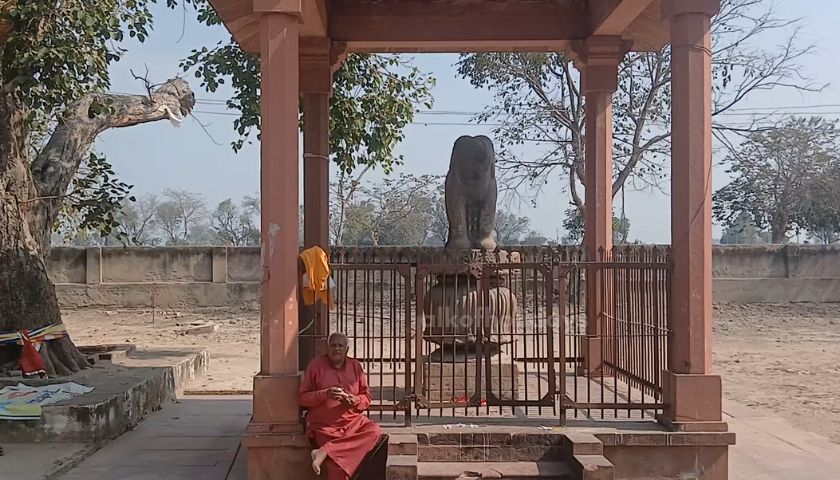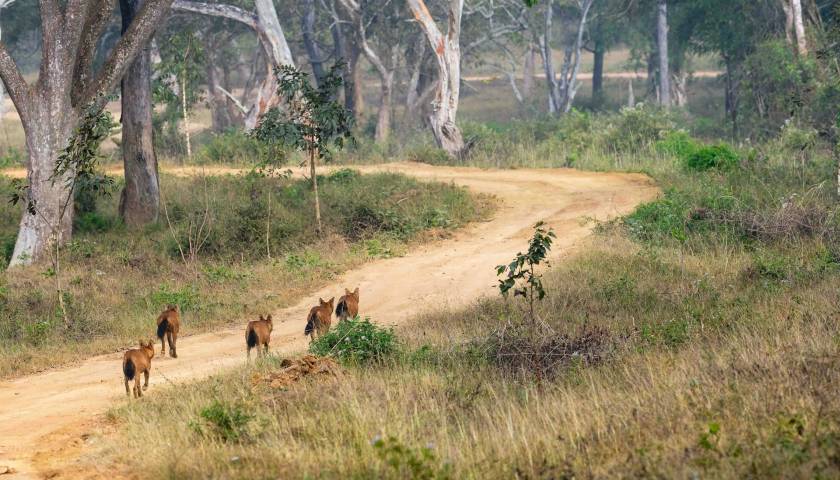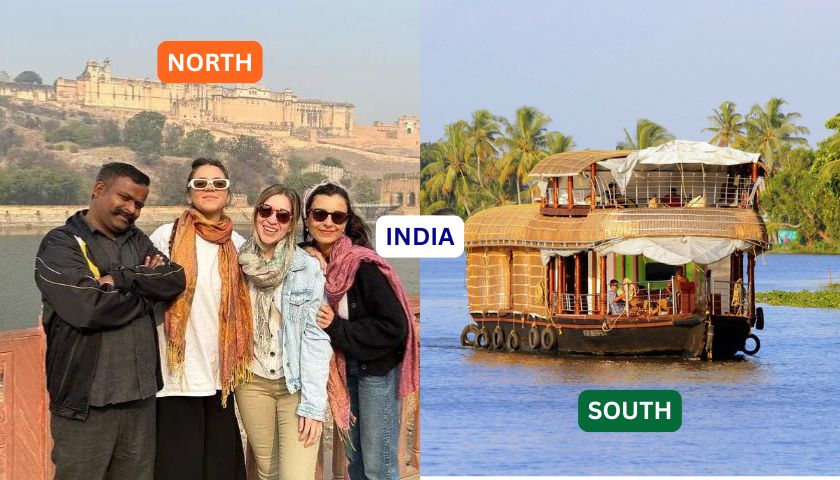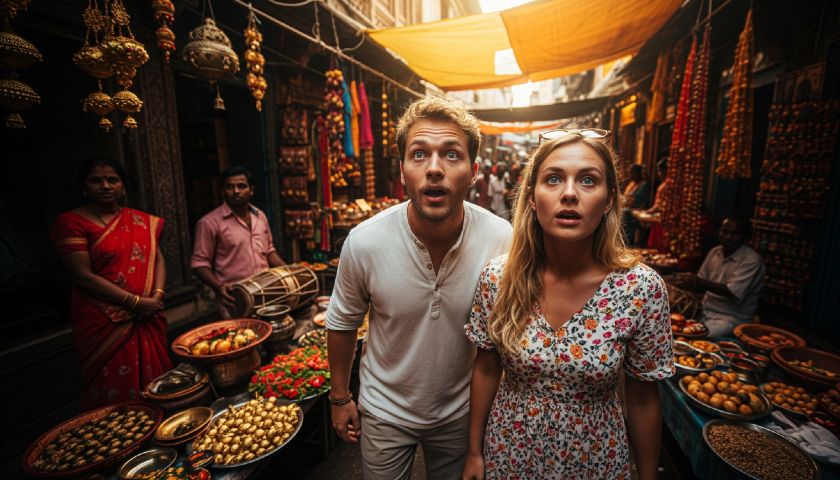India is a land of diverse cultures, breathtaking landscapes, and vibrant festivals, making it a unique destination year-round. However, knowing the best time to visit can greatly enhance your experience. Factors such as weather conditions, local festivals, and crowd levels play a crucial role in planning your trip. Whether you're drawn to the lush greenery of the monsoon season or the lively celebrations of winter festivals, understanding the nuances of each season can help you make the most of your journey.
As you navigate through India’s varied climates, you’ll find that each region has its own charm and character at different times of the year. From the cool, pleasant weather of autumn to the colorful festivities of spring, there's always something special happening. In this blog post, we'll explore the best times to visit India, taking into account weather patterns, major festivals, and the impact of tourist crowds, ensuring you have the most enriching experience possible during your travels.
Best Time to Visit North India
Weather Considerations
The weather in North India varies widely across its vast landscape, but the best time to visit is generally during the winter months, from October to March. During this period, the climate is pleasant and comfortable, with cooler temperatures making it ideal for exploring historical cities like Delhi, Jaipur, and Agra or trekking in the Himalayan foothills. Summers (April to June) can be extremely hot, with temperatures soaring above 40°C (104°F), especially in the plains of Rajasthan and Uttar Pradesh. The monsoon season (July to September) brings heavy rainfall, particularly in the Himalayan regions, but also offers a more refreshing and quieter experience for visitors who don’t mind a bit of rain.
Festival Season
North India comes alive during its vibrant festival season, with winter being the prime time for celebrations. Diwali, the festival of lights, usually occurs between October and November, filling cities with spectacular displays of lights, fireworks, and joy. Holi, the festival of colors, is celebrated in March, especially in places like Mathura and Vrindavan, where the festivities are at their most colorful and exuberant. These festivals provide a unique opportunity to experience India's rich cultural heritage and traditions up close. Visiting during the festival season allows you to witness the deep-rooted customs, rituals, and the joyous spirit of the local communities.
Crowd Dynamics
Crowds in North India fluctuate based on the season, with peak tourist times falling between October and March. Popular destinations like the Taj Mahal, Jaipur's Amber Fort, and the holy city of Varanasi are bustling with tourists during this period, creating a vibrant but busy atmosphere. If you prefer a more relaxed experience, visiting during the monsoon or the tail end of summer may offer fewer crowds and lower prices, though weather conditions might not be as ideal. For festival-goers, be prepared for even larger crowds during Diwali and Holi, as locals and tourists flock to major cities to partake in the celebrations.
Best Time to Visit South India
Weather Considerations
South India experiences a more tropical climate, with hot and humid weather throughout much of the year. The best time to visit is during the winter months, from November to February, when the temperatures are cooler and more comfortable for sightseeing and outdoor activities. Coastal areas like Kerala and Tamil Nadu are particularly pleasant during this time, offering a perfect balance of sunshine and mild temperatures. Summers (March to May) can be extremely hot, especially inland, with temperatures often exceeding 35°C (95°F). The monsoon season (June to September) brings heavy rainfall to much of the region, especially in Kerala and the Western Ghats, making it an ideal time for nature lovers to witness the lush green landscapes, though it may not be the best for beachgoers.
Festival Season
South India is home to some of the most vibrant and culturally rich festivals in the country, with many celebrations peaking during the cooler months. Pongal, celebrated in Tamil Nadu in mid-January, is a major harvest festival marked by traditional rituals and feasts. Onam, held in Kerala around August-September, is another grand festival that includes boat races, cultural performances, and floral decorations. These festivals provide a unique insight into the region’s rich heritage and are often less crowded than their northern counterparts. Visiting South India during these times allows you to immerse yourself in the festive spirit while enjoying the pleasant weather.
Crowd Dynamics
Crowds in South India tend to be more manageable compared to the popular tourist circuits in the north, though certain destinations like Kerala's backwaters and the beaches of Goa can get quite busy during peak season (December to February). This is especially true around the Christmas and New Year holidays, when both domestic and international tourists flock to these regions. Monsoon season sees fewer tourists, offering a more peaceful and budget-friendly experience, especially for those looking to enjoy the region’s natural beauty. However, keep in mind that some outdoor activities, like beach visits and trekking, may be limited due to heavy rains.
Best Time to Visit East India
Weather Considerations
East India, with its diverse landscapes ranging from the coastal plains of Odisha to the mountainous regions of West Bengal and Sikkim, experiences varied climatic conditions. The ideal time to visit is from October to March, when the weather is cool and dry, making it perfect for exploring the region’s rich cultural heritage and natural beauty. Winter temperatures remain comfortable, especially in places like Kolkata, Puri, and Bhubaneswar. The summer months (April to June) can be quite hot, with temperatures rising above 35°C (95°F), especially in the plains, while the mountainous areas remain cooler. The monsoon season (June to September) brings heavy rainfall, particularly in northeastern states like Assam and Meghalaya, offering lush greenery but also frequent downpours that may hinder travel plans.
Festival Season
East India is a region known for its vibrant and deeply-rooted cultural festivals. Durga Puja, celebrated in West Bengal in October, is one of the biggest and most elaborate festivals in India, with grand pandals, processions, and cultural performances. Visiting Kolkata during Durga Puja is an unforgettable experience as the city transforms into a hub of artistic and spiritual expression. The Rath Yatra in Puri, Odisha, held in June or July, is another significant festival attracting thousands of devotees to witness the grand chariot procession. Festivals in East India reflect the deep connection between the region’s people, religion, and traditions, making the festival season a great time to visit.
Crowd Dynamics
Crowds in East India vary depending on the season and festivals. The winter months (October to March) see an increase in tourist activity, especially in popular destinations like Darjeeling, Sikkim, and the Sundarbans, as travelers take advantage of the pleasant weather. Festival seasons, especially during Durga Puja and Rath Yatra, bring in large crowds of both locals and tourists, which can make the region feel lively but also more congested. If you prefer fewer crowds, visiting just after the festival season or during the early monsoon (June) can offer a more serene experience, though rain may limit some outdoor activities.
Best Time to Visit Northeast India
Weather Considerations
Northeast India, known for its breathtaking landscapes, tea gardens, and diverse tribal cultures, experiences a subtropical climate with heavy rainfall during the monsoon. The best time to visit is from October to April, when the weather is cool and dry, ideal for exploring the scenic beauty of states like Assam, Meghalaya, and Arunachal Pradesh. During this period, temperatures range from 10°C to 25°C (50°F to 77°F), making it comfortable for trekking, wildlife safaris, and sightseeing. Summers (May to June) can be warm, but the higher altitude regions like Sikkim and Meghalaya remain cooler. The monsoon season (June to September) brings heavy rains, especially in places like Cherrapunji and Mawsynram, known as the wettest places on earth, which can make travel difficult but offers a lush green landscape.
Festival Season
The cultural festivals of Northeast India are vibrant and unique, offering an immersive experience into the region’s rich traditions. October and November are significant months for festivals such as the Durga Puja in Tripura and the harvest festivals in Arunachal Pradesh. One of the most famous is the Hornbill Festival in Nagaland, celebrated in early December, where various tribes come together to showcase their culture, dance, and music. The Bihu Festival, celebrated in Assam in April, marks the Assamese New Year and the onset of spring. These festivals are perfect for experiencing the indigenous customs, food, and traditional attire of the region, making this an excellent time for culture enthusiasts to visit.
Crowd Dynamics
Northeast India is less crowded compared to other parts of the country, even during peak travel seasons. The cooler months from October to April see an increase in tourist activity, especially in popular destinations like Kaziranga National Park, Tawang, and the hill stations of Shillong and Gangtok. Festivals like the Hornbill Festival attract larger crowds, but the atmosphere remains relaxed and less congested compared to major festivals in other regions of India. During the monsoon season, the region sees fewer tourists, offering a quieter experience for those looking to explore the lush greenery, but heavy rains can affect travel plans and accessibility.
Best Time to Visit Central India
Weather Considerations
Central India, encompassing states like Madhya Pradesh and Chhattisgarh, experiences a tropical climate with distinct summers, winters, and monsoons. The best time to visit is during the winter months from October to March when the weather is cool and dry, making it ideal for exploring historical sites, national parks, and vibrant cities. During this period, daytime temperatures range between 10°C to 25°C (50°F to 77°F), offering pleasant conditions for wildlife safaris in Bandhavgarh, Kanha, and Pench national parks. Summers (April to June) can be extremely hot, with temperatures soaring above 40°C (104°F), making outdoor activities uncomfortable. The monsoon season (July to September) brings relief from the heat, with lush greenery but also heavy rainfall, which can make travel challenging in rural areas.
Festival Season
Central India is a cultural heartland, and its festivals reflect the region's deep religious and historical significance. The winter season coincides with major festivals like Diwali, celebrated with grandeur across cities like Bhopal, Indore, and Khajuraho in October or November. Another key festival is Makar Sankranti in January, which marks the harvest season and is observed with kite flying and local festivities. For a more unique experience, the Khajuraho Dance Festival, held in February, showcases classical Indian dance performances in the backdrop of the famous Khajuraho Temples, creating an unforgettable cultural atmosphere. Visiting Central India during these festivals allows travelers to experience its rich traditions and heritage.
Crowd Dynamics
Crowds in Central India peak during the winter months, particularly from November to February, as the pleasant weather attracts both domestic and international tourists to popular destinations like the UNESCO World Heritage sites of Khajuraho, Sanchi, and the tiger reserves. Wildlife enthusiasts flock to the national parks during this period, especially during holidays and festival seasons. The summer months (April to June) see fewer tourists due to the intense heat, making it a quieter time to visit, though national parks still draw visitors hoping for wildlife sightings as animals gather around water sources. Monsoon season (July to September) brings fewer crowds, offering a peaceful experience, though some parks and rural areas may be less accessible due to rain.
Best Time to Visit West India
Weather Considerations
West India, which includes Rajasthan, Gujarat, Maharashtra, and Goa, experiences a diverse climate due to its vast geography, ranging from deserts to coastal regions. The ideal time to visit is during the cooler months from October to March when the weather is pleasant for exploring Rajasthan’s forts, Gujarat’s cultural landmarks, and Goa’s beaches. During this time, temperatures range from 10°C to 30°C (50°F to 86°F), with the desert areas of Rajasthan and Gujarat being more comfortable. Summers (April to June) are extremely hot, particularly in Rajasthan, where temperatures can exceed 45°C (113°F). Monsoons (July to September) bring heavy rains, especially along the coast in Maharashtra and Goa, offering lush greenery but also potential travel disruptions due to flooding in some areas.
Festival Season
West India comes alive with vibrant festivals throughout the year, with winter being the prime season for cultural celebrations. One of the most famous is the Pushkar Camel Fair in Rajasthan in November, which attracts thousands of visitors for its colorful markets, camel races, and cultural performances. Diwali, celebrated in October or November, lights up the region with grandeur, especially in cities like Jaipur, Udaipur, and Ahmedabad. Gujarat’s Navratri Festival, held in September or October, is another major cultural event featuring traditional Garba dance and music. Goa’s Carnival, celebrated in February, showcases Portuguese-influenced festivities with parades and parties, offering a lively beach experience. Visiting during these festivals adds a cultural depth to your trip, giving you a chance to partake in the region's rich traditions.
Crowd Dynamics
West India is a popular tourist region, and crowd levels vary based on the season and destination. The winter months (October to March) see a significant influx of tourists, especially in places like Rajasthan's Jaipur, Udaipur, and Jaisalmer, as well as the beaches of Goa. National parks like Ranthambore in Rajasthan and Gir in Gujarat also see increased footfall during this time for wildlife viewing. The summer months (April to June) bring fewer crowds, particularly in Rajasthan and Gujarat, making it a quieter time to visit, although the intense heat can limit outdoor activities. Monsoon season (July to September) is off-peak, especially in coastal regions like Goa and Maharashtra, where rains deter most tourists. However, those seeking peace and lush landscapes will find fewer tourists and lower prices during this time.
Best Time to Visit the Himalayan Region of India
Weather Considerations
The Himalayan region of India, which includes states like Himachal Pradesh, Uttarakhand, Jammu & Kashmir, and parts of Sikkim and West Bengal, experiences a dramatic range of climates depending on altitude. The best time to visit is from March to June and September to November. The spring and summer months (March to June) offer clear skies and pleasant weather, perfect for trekking, exploring hill stations like Manali and Shimla, or visiting spiritual sites such as Rishikesh and Dharamshala. Temperatures during these months range from 15°C to 30°C (59°F to 86°F), making it ideal for outdoor activities. The autumn months (September to November) provide another window of good weather before winter sets in, offering clear views and cooler temperatures. Winters (December to February) bring heavy snowfall, making it perfect for snow sports in places like Auli, Gulmarg, and Manali, but it also makes high-altitude treks inaccessible.
Festival Season
The Himalayan region hosts a variety of unique festivals, particularly tied to its spiritual and cultural heritage. Summer months are a great time to visit for festivals like the Hemis Festival in Ladakh, celebrated in June, which showcases traditional Tibetan music, dance, and vibrant masks. In Uttarakhand, the Char Dham Yatra (pilgrimage to four sacred sites) starts in April or May, drawing thousands of pilgrims to temples like Kedarnath and Badrinath. During autumn, Diwali celebrations light up the hill stations, and in Himachal Pradesh, the Kullu Dussehra festival is a grand spectacle in October. Winter festivals, like Losar in Ladakh, mark the Tibetan New Year with vibrant cultural performances and rituals. Visiting during these times offers a cultural immersion in the rich traditions of the region.
Crowd Dynamics
The Himalayan region sees varying crowd levels depending on the season and destination. The summer months (March to June) are peak tourist season, especially in popular hill stations like Shimla, Manali, and Nainital, as well as trekking hubs such as Leh and Rishikesh. During these months, crowds can be substantial, particularly during long weekends and holidays. The monsoon season (July to August) sees fewer tourists due to the risk of landslides and heavy rains, making it less crowded but also less safe for travel. Autumn (September to November) brings a second wave of tourists as the weather stabilizes and trekking conditions improve, although it’s less crowded than summer. Winter (December to February) attracts adventure seekers for snow sports, particularly in destinations like Auli and Gulmarg, but many higher-altitude areas remain less visited due to heavy snowfall and colder conditions.
Overall, India is a land of diverse climates, cultures, and experiences, making it essential to choose the right time to visit based on your interests and the regions you wish to explore. From the vibrant festivals of the north to the serene beaches of the south, each season offers something unique. Whether you’re drawn to the snowy peaks of the Himalayas, the bustling cities of the west, or the tranquil landscapes of the east, planning your visit according to the best time can enhance your travel experience.
At Alkof Holidays, we understand that every traveler has unique preferences and desires. Our team is here to help you customize your India tour, ensuring that you make the most of your journey, no matter the season. Don’t wait to explore this incredible country—reach out to us today, and let’s create a personalized itinerary that aligns with your interests and dream destinations. Your unforgettable adventure in India awaits!









